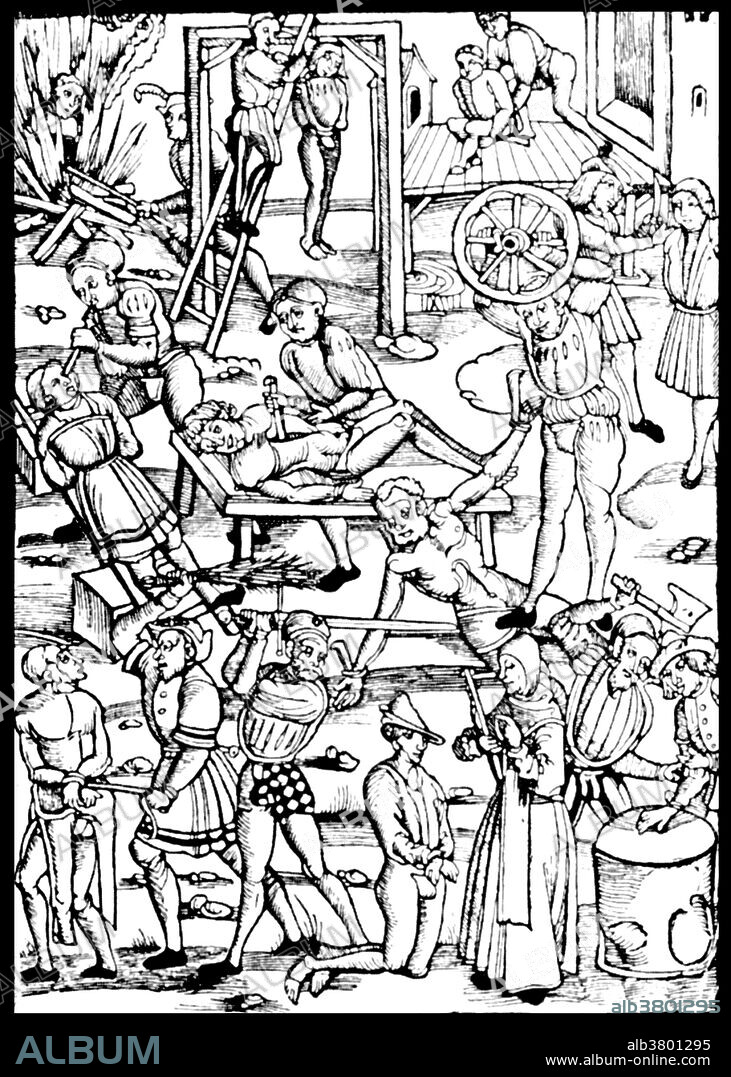alb3801295
Medieval Torture

|
Ajouter à une autre Lightbox |
|
Ajouter à une autre Lightbox |



Avez-vous déjà un compte? S'identifier
Vous n'avez pas de compte ? S'inscrire
Acheter cette image.
Sélectionnez l'usage:

Titre:
Medieval Torture
Légende:
Voir la traduction automatique
Medieval and early modern European courts used torture, depending on the crime of the accused and his or her social status. Torture was deemed a legitimate means to extract confessions or to obtain the names of accomplices or other information about a crime, although many confessions were greatly invalid due to the victim being forced to confess under great agony and pressure. It was permitted by law only if there was already half-proof against the accused. Torture in the Medieval Inquisition began in 1252 with a papal bull Ad Extirpanda and ended in 1816 when another papal bull forbade its use. Torture was usually conducted in secret, in underground dungeons. By contrast, torturous executions were typically public, and woodcuts of prisoners being hanged, drawn and quartered, and heretics were burned at the stake show large crowds of spectators. Tortures later in the Middle Ages consisted of whipping; the crushing of thumbs, feet, legs, and heads in iron presses; burning the flesh; and tearing out teeth, fingernails, and toenails with red-hot iron forceps. Limb-smashing and drowning were also popular medieval tortures.
Crédit:
Album / NYPL/Science Source
Autorisations:
Modèle: Non - Propriété: Non
Questions sur les droits?
Questions sur les droits?
Taille de l'image:
3104 x 4350 px | 38.6 MB
Taille d'impression:
26.3 x 36.8 cm | 10.3 x 14.5 in (300 dpi)
Mots clés:
16E SIECLE • 16EME S • BOIS, GRAVURE SUR • BOURREAU • CRUAUTE • DECAPITATION • DECAPITATIONS • DECAPITER • EXECUTION CAPITALE • EXECUTION • GRAVURE SUR BOIS • GRAVURE TAILLE DOUCE • ILLUSTRATION • MORT DECAPITATION • MORT EXECUTION • PERSECUTION • POURSUITE • SEIZIÈME SIÈCLE • TAILLE-DOUCE • TECHNIQUE: GRAVURE SUR BOI • VICTIME • XVIE SIECLE • XYLOGRAPHIE
 Pinterest
Pinterest Twitter
Twitter Facebook
Facebook Copier le lien
Copier le lien Email
Email
